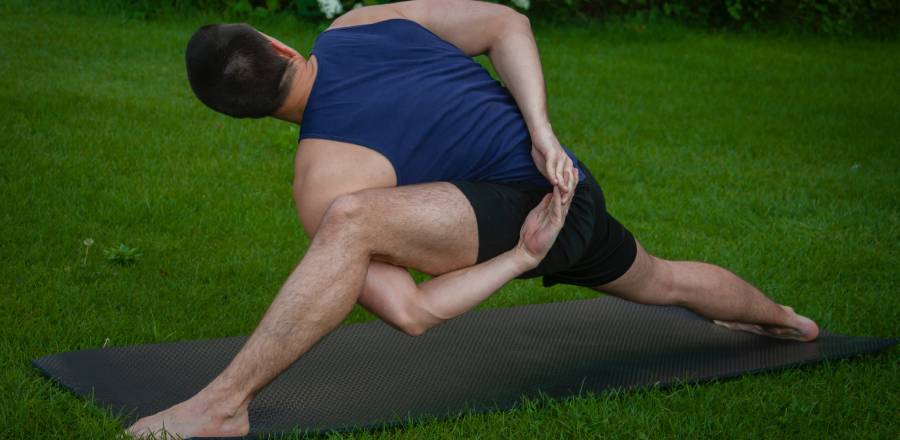Have you ever experienced muscle tightness and tension? It’s a common problem that can cause discomfort and even pain. Tight muscles can result from a variety of factors, including stress, overuse, injury, and poor posture. Fortunately, there are several effective ways to relax tight muscles and alleviate discomfort. In this article, we’ll explore some of the best techniques and tips for relaxing tight muscles.
Table of Contents
Stretching
Stretching is one of the most effective ways to relieve muscle tension and tightness. Stretching helps to lengthen and loosen muscles, increase flexibility, and improve blood flow to the affected area. There are many different stretching techniques you can use to target specific muscles, such as static stretching, dynamic stretching, and foam rolling.
Static stretching involves holding a stretch in one position for a period of time, usually around 30 seconds. This can be done either standing or lying down. Dynamic stretching involves moving your body through a range of motions to warm up and prepare the muscles for activity. Foam rolling involves using a foam roller to apply pressure to tight or sore muscles to release tension and improve mobility.
Massage
Massage is another effective way to relax tight muscles. Massage helps to increase blood flow to the affected area, reduce muscle tension, and promote relaxation. There are many different types of massage you can try, including Swedish massage, deep tissue massage, and trigger point massage.
Swedish massage is a gentle, relaxing massage that uses long strokes, kneading, and circular movements to release tension and promote relaxation. Deep tissue massage uses more pressure and focuses on the deeper layers of muscle tissue to relieve chronic muscle tension and pain. Trigger point massage involves applying pressure to specific points in the muscle to relieve pain and tension.
Heat Therapy
Heat therapy is another effective way to relax tight muscles. Heat helps to increase blood flow to the affected area, which can promote relaxation and reduce muscle tension. You can use heat therapy in a variety of ways, such as taking a warm bath, using a heating pad or hot water bottle, or using a sauna or steam room.
Cold Therapy
Cold therapy is another effective way to relax tight muscles, especially if there is inflammation or swelling present. Cold therapy helps to reduce inflammation, numb the area, and reduce muscle spasms. You can use cold therapy in a variety of ways, such as applying an ice pack or cold compress to the affected area, taking a cold bath or shower, or using a cold therapy machine.
Relaxation Techniques
Finally, relaxation techniques such as deep breathing, meditation, and yoga can also help to relax tight muscles. These techniques help to reduce stress and tension, which can contribute to muscle tightness. Deep breathing involves taking slow, deep breaths to calm the body and promote relaxation. Meditation involves focusing the mind on a specific object or thought to promote relaxation and reduce stress. Yoga involves a series of poses and stretches that can help to improve flexibility, reduce stress, and promote relaxation.
Conclusion
There are many effective ways to relax tight muscles, including stretching, massage, heat therapy, cold therapy, and relaxation techniques. By incorporating these techniques into your daily routine, you can alleviate muscle tension and discomfort and improve your overall well-being. Remember to listen to your body and seek medical advice if you experience severe or persistent muscle tightness or pain.
FAQs
- What causes muscle tightness?
Muscle tightness can be caused by a variety of factors, including stress, overuse, injury, poor posture, and dehydration. - How do I know if I have tight muscles?
Some common symptoms of tight muscles include stiffness, soreness, limited range of motion, and pain. - How long does it take to relax tight muscles?
The time it takes to relax tight muscles can vary depending on the severity of the muscle tightness and the techniques used. It may take a few minutes to several weeks to fully relax tight muscles. - Can I exercise with tight muscles?
It’s generally safe to exercise with tight muscles, but it’s important to listen to your body and avoid overexerting yourself. Gentle stretching and low-impact exercises can help to improve mobility and alleviate muscle tension. - Can relaxation techniques really help to relax tight muscles?
Yes, relaxation techniques such as deep breathing, meditation, and yoga can be effective ways to relax tight muscles. These techniques help to reduce stress and tension, which can contribute to muscle tightness. - When should I seek medical advice for muscle tightness?
You should seek medical advice if you experience severe or persistent muscle tightness or pain, or if your muscle tightness is accompanied by other symptoms such as numbness, tingling, or weakness. - Are there any risks associated with using heat therapy or cold therapy to relax tight muscles?
Heat therapy and cold therapy are generally safe when used properly, but there are some risks associated with each. For example, heat therapy can cause burns or skin damage if applied for too long or at too high of a temperature, while cold therapy can cause frostbite or skin damage if applied for too long or without a barrier between the skin and the cold source. It’s important to follow the instructions for use and seek medical advice if you experience any adverse effects.





